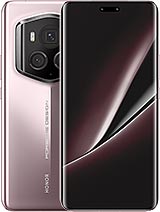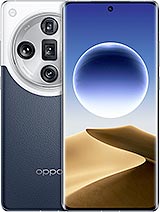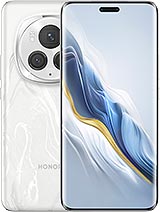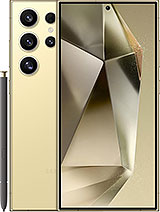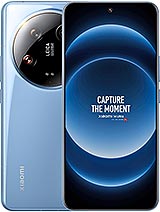Honor Magic6 RSR Porsche Design review

6.8-inch dual-layer OLED display
The Magic6 RSR features a seemingly identical OLED display to one on the Magic6 Pro. It's got a 6.8-inch diagonal and a 1,280x2,800px resolution (453ppi pixel density), supports dynamically adaptive refresh rate in the 1-120Hz range, and has the same 4320Hz PWM capability as the Magic6 Pro's panel. It's also Dolby Vision certified (HDR10+ too).

What sets the RSR version's panel apart is an extra light emitting layer - it's a dual-stack, or dual-layer, or tandem display. Thanks to both layers working together, you can have comparable resulting brightness levels at lower power input, which should help reduce long-term panel degradation, plus you could have higher maximum brightness. Honor says it's the smartphone industry's first dual-layer OLED.
The press materials promise just 1% brightness degradation after 3 years of use and boast a 600% increased lifespan. Now, how important that is for a smartphone which will be obsolete well before you start noticing any brightness degradation is a valid question. However, asking such questions is not how technology moves forward, so we'll take the advancement even if it's just from a proof-of-concept perspective.
That said, the brightness and efficiency aspects of this cutting-edge technology can be appreciated today - no need to wait for years. For the Magic6 RSR, Honor advertises a 1,800-nit full-screen maximum brightness - 200 more than on the Magic6 Pro. The 5,000-nit local peak brightness remains unchanged.
 Regular Magic6 Pro (left) next to Porsche Design Magic6 RSR
Regular Magic6 Pro (left) next to Porsche Design Magic6 RSR
Our testing confirmed that the Porsche Design version is brighter, both in manual operation and when the adaptive brightness is enabled. We'll be quick to admit that the Magic6 Pro is plenty bright itself and we wouldn't think to complain about its display's performance. Yet, the RSR is brighter, and even if the numerical advantage isn't massive, it's there. Even casual observers said it looked brighter.
For kicks and giggles (or because of the usual reviewer's curiosity) we did a few more tests on the Magic6 RSR and repeated them on the Magic6 Pro since we still had that lying around. We tested the brightness on a full-screen white patch, as well as for a 20% window. On both phones, the 100% results were virtually identical to the respective 75% ones in both manual and auto mode. The 20% patch numbers were ever so slightly higher - 1659nits on the Pro and 1805nits on the RSR.

The way we interpret this is that Honor's implementation of the dual-layer OLED display is geared more towards the panel's longevity and efficiency (more on that later), rather than its sheer brightness. They just opted to allow the RSR version to go a little brighter than the regular Pro to make the number stand out as a difference in direct comparisons. Long-term performance is harder to work with from a marketing perspective than a more immediately noticeable nudge in the peak brightness number. And, as established, it's not exactly like the Magic6 Pro is strapped for nits to begin with.
We also observed one less easily quantifiable difference between the two displays. With the two side by side, placed under bright sunlight, and with the auto brightness engaged, the RSR version was able to sustain its maximum brightness longer than the Magic6 Pro. How much longer will likely depend on ambient temperature and possibly other factors, but the advantage will be there.
Honor Magic6 RSR Porsche Design battery life
Our new Active Use Score is an estimate of how long the battery will last if you use the device with a mix of all four test activities. You can adjust the calculation based on your usage pattern using the sliders below. You can read about our current battery life testing procedure here. For a comprehensive list of all tested devices so far, head this way.
While hardly experts on the matter, once we had a general idea of the dual-layer OLED's behavior, it was time for some battery testing. One of the key points we wanted to establish was whether operating at 200nits on a display of the same size and resolution we'll see a meaningful difference between a dual-layer and a single-layer panel (a modern one such as the Magic6 Pro's, of course).
Obviously, we only had a sample of one pair of comparable devices, but it was a decent starting point for a theory. Plus we don't expect to get many pairs of phones that would lend themselves to such comparisons - with everything else being equal between the two.
In our testing, we got ever so slightly lower runtimes on the RSR version in the video and gaming disciplines, but the difference was in the margin of error of the methodology. It can be easily explained with a run-to-run variation even on the exact same unit.
On the other hand, the almost full-hour advantage of the Porsche Design Magic6 in the web browsing test couldn't have been an accident. We resorted to further retesting, which only confirmed the difference between the two phones in that test.
We decided that this is as good a chance as any to carry an extra batch of testing that we don't normally do. We figured that testing at maximum brightness (780nits on the Pro and 961nits on the RSR) might be insightful and it turned out that was indeed the case.

Under these conditions, the two phones returned essentially identical results in the screen-on runs - with the RSR version cranking out some 23% higher brightness. So it would appear that the dual-layer design is, indeed, more efficient.
Reader comments
- FKM
- 13 May 2024
- Hx1
I agree with you big time
